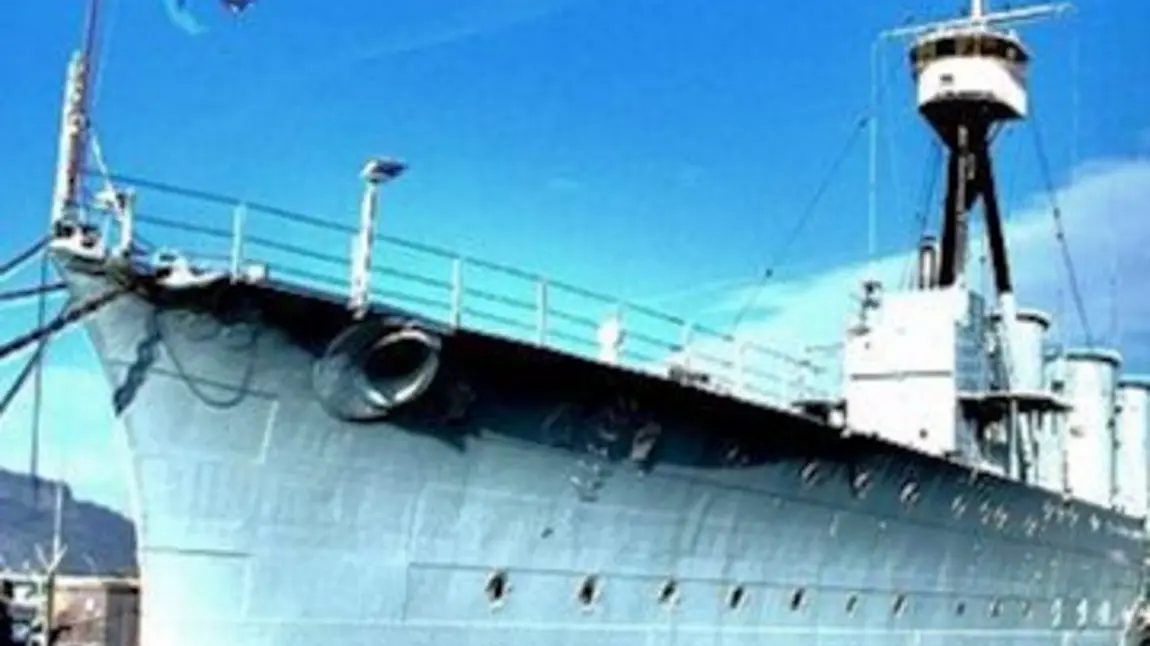HMS Caroline restoration work to start

Funding for the first stages of restoration work on HMS Caroline has been confirmed following the transfer of the ship’s ownership from the MoD to the National Museum of the Royal Navy (NMRN).
A two-stage funding process means the first tranche of work can now begin to save HMS Caroline from further deterioration. Thanks to the transfer of ownership by Deed of Gift, £1.1m from the National Heritage Memorial Fund and a further £845,000 from the Heritage Lottery Fund (HLF) can now be unlocked.
Work officially starts on the ship, exactly one hundred years to the day since the ship’s keel was first laid in Birkenhead on 28 January 1914.
Chair of the Project Board and Chief of Staff at NMRN Captain John Rees OBE says he is relieved preservation work can be undertaken.
“We have been concerned by Caroline’s deterioration,” he says. “Even though the ship is in remarkable condition and is closely monitored on a daily basis by the ship keeper, it is clear that she has been taking on water and this has been the cause of some damage.”
Plans are in place to eventually open the First World War fighting ship as a museum with full public access. Currently docked in the historic Titanic Quarter of Belfast, the ship is the subject of a second joint funding application, this time to the HLF.
Head of HLF Northern Ireland, Paul Mullan, welcomed the start of works to secure the ship’s future.
“It is wonderful to see the first stage of works to preserve and showcase one of the greatest remaining naval heritage assets get underway. It has taken much hard work and determination to progress the project and reach this milestone. On behalf of HLF I congratulate everyone involved on their tremendous efforts thus far to safeguard HMS Caroline for the future.”
The joint application by NMRN and the Department for Enterprise Trade and Investment (DETI) has received a Round One green light which means £845,000 has been released to allow development phase work, which will include further surveys and work onboard.
“Our objective now is to secure the remaining funding for which we have applied,” says Captain Rees. “With the balance of the HLF funding of £11.2million in place we will be able to undertake very substantial restoration and transformation work to create a museum commemorating World War One, the role of the people of Belfast, Northern Ireland and the rest of the island in the war and how Caroline became such an integral part of Belfast’s maritime heritage.”
DETI Minister Arlene Foster says the ship’s future in Belfast is assured.
“We fought long and hard to keep the Caroline in Belfast and to make the ship accessible on 31 May 2016 to mark its role in the Battle of Jutland against the German Imperial Navy,” says the Minister.
“I am very pleased that my department and the National Museum of the Royal Navy have managed to progress this complex project and are on track to deliver what will be one of Belfast’s top tourism attractions when it opens.”
Notes to editors
Built in Merseyside in 1914, HMS Caroline is the last survivor of the Battle of Jutland, the First World War’s longest, most strategically important sea battle and the only time the full German and British navies engaged directly. A light cruiser, weighing 3,750 tons and 446ft long, when built she was technologically ground-breaking. It was her maximum speed of close to 30 knots that enabled the British Navy to respond to the increasing threat of long range torpedo attack on battleships, locating the enemy fleet and then rapidly carry news back to the British battleships.
When the war ended she became a static training ship based in Belfast. During the Second World War, HMS Caroline was back in action, acting as a key base for operations to protect the North Atlantic convoys from U-boat attacks. In 1945 she returned to her role as a static drill ship in Belfast until decommissioned in 2011, making her the longest ship in commission in the British Navy after HMS Victory.
The most significant war ship of the 20th century, HMS Caroline is one of only 200 vessels in the National Historic Fleet. What is even more significant about her is that she is barely unchanged from the day she was constructed and is 80 per cent complete.